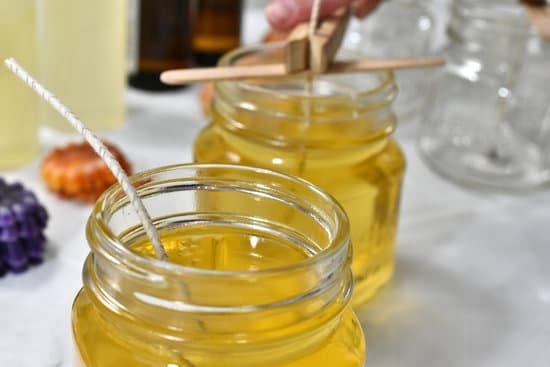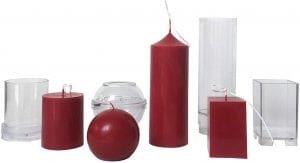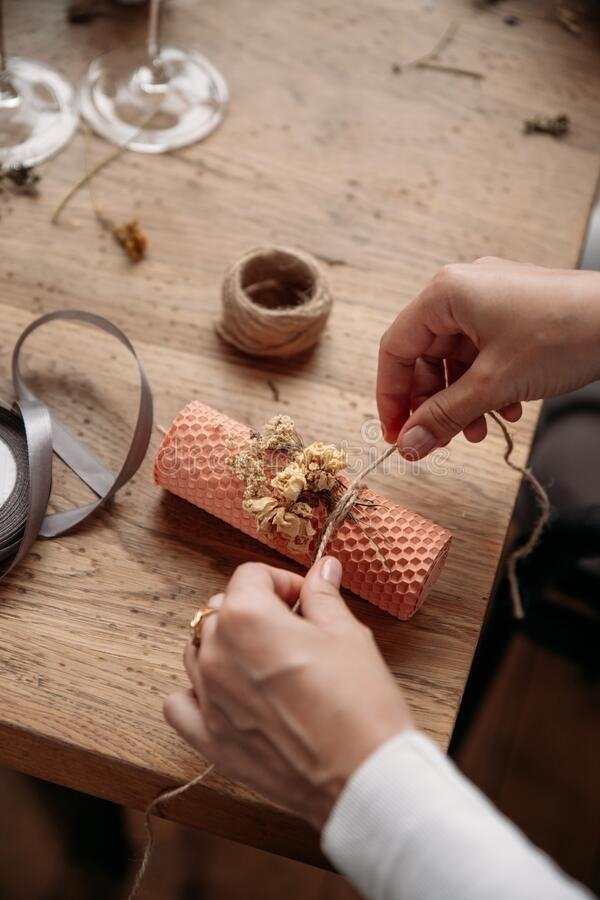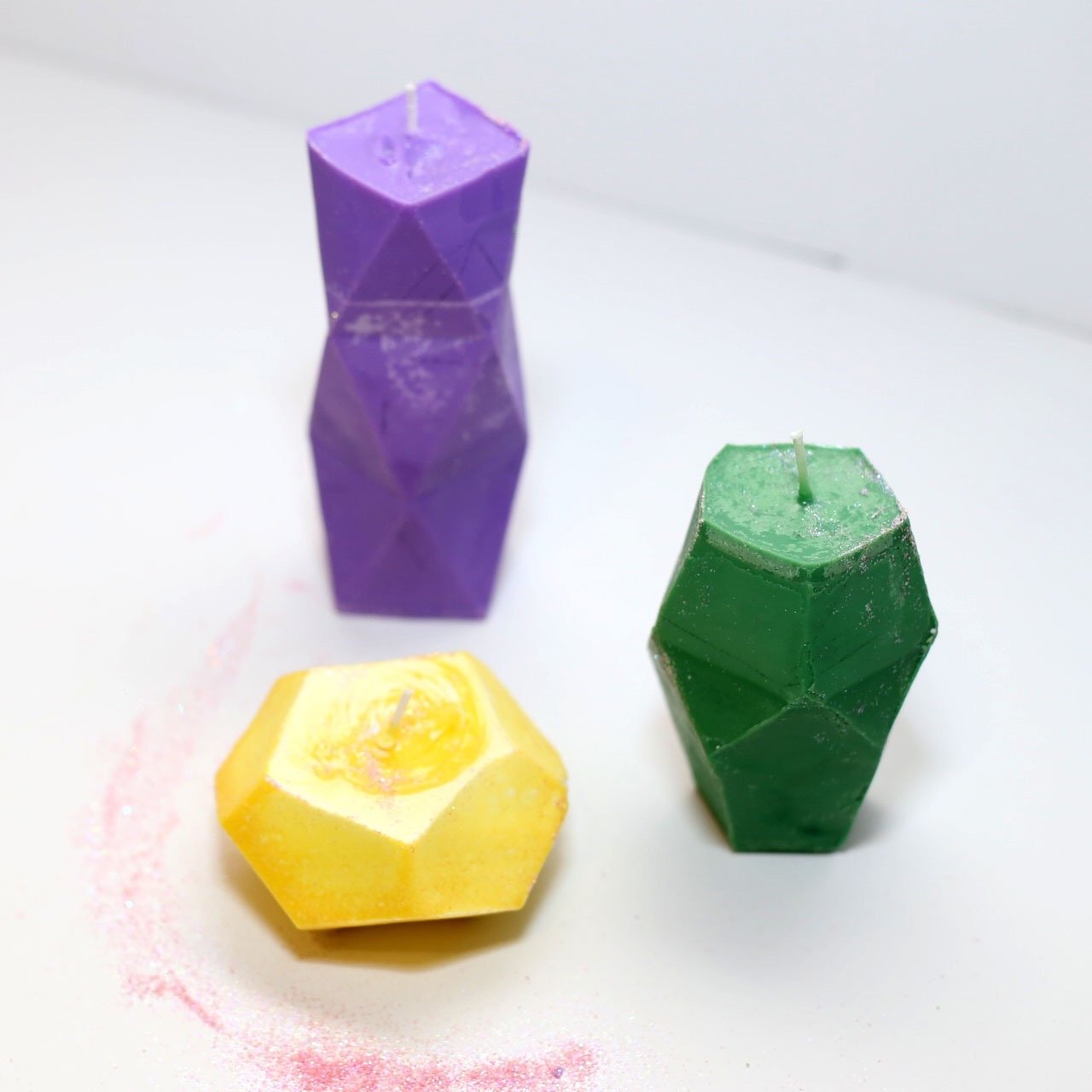Include Sample Ratios
• Paraffin Wax to Fragrance Oil: 8-10%
• Soy Wax to Fragrance Oil: 6-8%
• Beeswax to Fragrance Oil: 4-5%
• Gel Wax to Fragrance Oil: 10-15%
• Palm Wax to Fragrance Oil: 8-12%
• Coconut Blend Wax to Fragrance Oil: 5-7.5%
Explain Different Types of Wax
Paraffin wax is a petroleum based wax, made from the same compounds used in making gasoline and kerosene. Its melting temperature is low, which makes it easy to melt down and add scent to. Paraffin can also hold a large portion of fragrance oil without changing the nature of the candle, making it ideal for strongly scented candles. It’s also very affordable compared to soy or beeswax.
Soy wax is made from hydrogenated soybean oil. It has a higher melting temperature than paraffin, but still melts quickly with minimal impact on your scents or candle shape. Soy wax comes in different grades that all contain varying amounts of fragrances oil and often require color tinting when compared to paraffin alternatives due to its natural color being an off-white shade.
Beeswax is derived from bee honeycomb and has a light yellow hue that gives off a natural hue to each candle it’s used in. Beeswax holds smaller amounts of scent oils compared to other blends but this gives it an advantage in burning slower than other waxes and therefore giving it more longevity per flame-lit hours compared to the usual combination of wax blends. As one of the most expensive versions of waxes for candles, beeswax is limitedly used as an additive mostly due to its price point and lesser ability to combine with large amounts of scents at once, unlike paraffin or soy options being available.
Review Different Brands
When it comes to candle making, the scent-to-wax ratio plays an important role in the quality of your finished product. Different brands will offer their own recommendations on what ratio of wax to scent should be used for successful results. This can differ from brand to brand. Therefore, before starting your project, it is a good idea to research popular brands and review their scent offerings, the strength of their scents, and recommended ratios for each individual scent.
When looking into a specific brand or range of scents, consider taking note of customer reviews as they are a great way to assess the quality of an individual product as well as see what people think about their experience with each fragrance. Doing this type of research can give you a better understanding of how one scent differs from another and if it is truly worth investing your time and money into. Additionally, reviewing the company’s website or other resources may help you learn more about its suggested measurements for fragrant wax tiers within its candles. Knowing this ahead of time may save you wasted supplies during the trial-and-error process when trying out new fragrance mixes.
Furthermore, some products provide pre-measured ratios that can take away much of the guesswork when first starting out in candle making. Whether deciding on pre-made products or coming up with your own recipe combinations, reviewing different brands and taking notes (on their ingredients list as well as mentioned tips) ahead of time is key for success in any candle making project!
Safety Considerations
Safety is of the utmost importance when candle making, as you are dealing with flammable materials and open flames. When calculating the ratio of scent to wax, it’s important to not overload the candle with too much fragrance oil as this can cause overheating and possible fires. The right ratio varies depending on the type of wax you are using, so it’s important to be aware of which wax you are using and what its specific requirements are. It’s also helpful to test the candles out in small batches before creating larger batches.
Proper safety precautions should also be taken prior to lighting any candles such as placing candles away from any potential flammable items, always extinguishing them before leaving a room or going to bed and keeping lit candles out of reach of children or pets. Additionally, always provide proper ventilation while burning a candle and use appropriate containers that do not get too hot when burning for extended periods at a time.
Add a Video Guide
When making candles, it is important to use the correct ratio of scent to wax. Too little scent can compromise the aroma of your candle, while too much scent can be overpowering. To find the perfect balance and make sure your candles smell exactly as you want them to, follow these steps for calculating the ideal scent to wax ratio.
Start by weighing your wax before melting it. Make sure that it measures in ounces or grams. Once melted, measure out the scented oil in a separate bowl and record how many milliliters it holds. After this, divide the weight of the wax by the volume of oil used and then multiply this number by 100. This will give you your ideal scent to wax ratio which you can adjust when making different scents or use a reference point when purchasing pre-made essential oils!
To further help demonstrate this process, here is an instructional video showing how to calculate the precise amount of essential oil needed to add fragrance to your candles:
[INSERT VIDEO HERE]

Welcome to my candle making blog! In this blog, I will be sharing my tips and tricks for making candles. I will also be sharing some of my favorite recipes.





